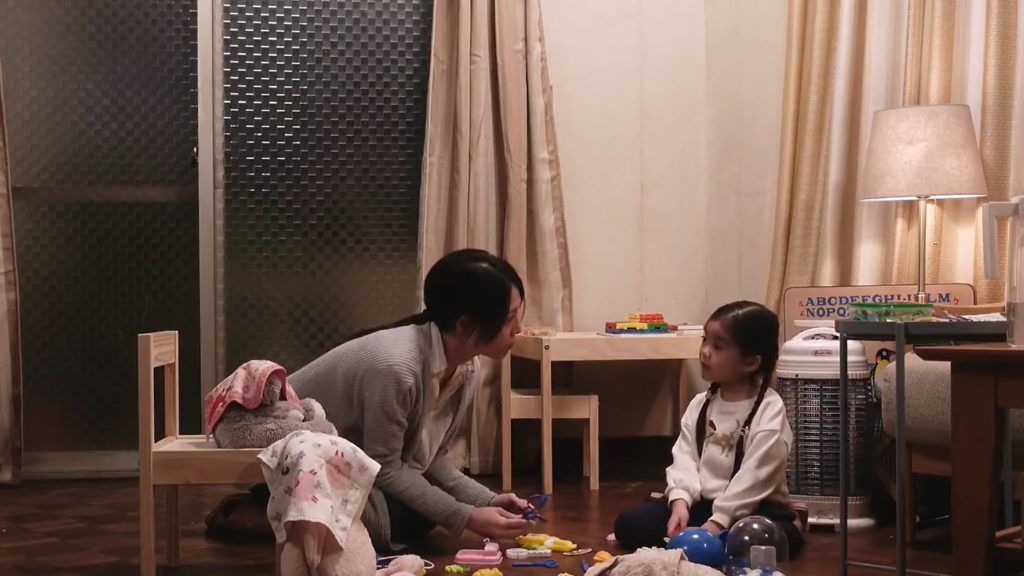Incantation
2022

Rated: R
Genre: Horror
Country: Taiwan
Run-Time: 1h 50min
Director: Kevin Ko
Cast
Tsai Hsuan-yen……..Li Ronan
Huang Sin-ting…….Dodo
Kao Ying-hsuan…….Ming
Sean Lin……………………Dom
I just completed my first Tik Tok challenge!
That’s right. I just watched the Taiwanese horror Incantation on Netflix from beginning to end. Notjustbored1214 has clearly underestimated how desensitized some of us really truly are.
To be honest, I didn’t actually know I was completing a viral Tik Tok challenge until after I finished the movie. I exhausted the Netflix horror queue and Incantation was the only new thing that looked worthwhile. And to be fair to Notjustbored1214, Incantation actually has parts that are scary, especially if I compare it to rather tame Verónica, the last movie the Internet told me I’d be too terrified to finish.
But hype is a double edged sword. More eyes means more scrutiny and Incantation has some flaws. For one thing, director Kevin Ko doesn’t fully commit to the found footage style. Our protagonist may be capable enough to hide a camera inside a stuffed bunny, but there are still far too many reaction shots that, quite frankly, would had been impossible to catch, especially when there isn’t even another person to do the filming. Then there is that confusing narrative structure…but more on this later. Also, Ko’s kitchen sink way of producing scares also involves a few familiar horror cliches that those of us versed in found footage have seen many times.
So, why am I recommending Incantation? Because it has a lot of great things going for it as well. For one thing, like Gonjiam: Haunted Asylum, (another Asian horror I stumbled upon on Netflix) it is an extremely fun ride. Incantation is a film with a well-planned mystery. And it withholds just enough of its carefully crafted mythology to keep us thinking about the film afterwards. Finally, It delivers an ending that is as innovative as it is bizarre…but more on this later.
Incantation starts rather ambitiously. We hear Li Ruo-nan (Hsuan-yen Tsai) narrate generally about how our will changes our fate while Ko plays mind games with us using the images of a Ferris wheel and a subway train. Don’t be confused by the timeline. We essentially are at the end of the story. We’ll learn that Li has prior experience as a ghost busting (as in prove they don’t exist) YouTuber and she is essentially setting us up to tell her tragic tale.
Then we get some shots that show us how things have progressed. If you pay attention, you will see the flashing image of the inside of a child’s mouth that has three sets of teeth. It is a wonderfully disturbing image. Ko has my attention.
The first half of Incantation can be difficult to follow. There are three different timelines to keep track of and Ko cuts between them is at first rather jarring considering the lack of context. His format allows for a lot of early scares, but they are somewhat blunted by our confusion. There is no doubt that this structure has caused a few frustrated viewers to turn Incantation off within the first half hour. But Ko will reward patience. The further we invest in each timeline’s story, the more we can see how each is interconnected, making the film both easier to follow and more horrifying in its implications.
Incantation wears its influences on its sleeve. There is more than a touch of Dark Water in the single mother’s fight to keep her daughter while a paranormal entity keeps making her look unfit. This timeline is also heavy on the Paranormal Activity-type scares, including one that comes straight out of Paranormal Activity 3– my favourite of the franchise. Some of the body horror looks like they came right out of the pages of a Junji Ito manga. And whenever we enter that remote village which worships the deity called Mother-Buddha, the film screams of Noroi: The Curse. (Discussing the similarities between the two films would be an excellent film studies essay.) Together, these are a great set of influences; so, regardless of how you feel about the originality of Ko’s film, there is no doubt he is pulling from some great sources.
But Ko saves his greatest and most innovative ideas for last. So many movies speak of that final location…in this case a tunnel…that should never be entered, only to let us down when we get there. But it is here, with the repaired footage, where Incantation is at its best. Like Noroi: The Curse, we get new terror that helps put into focus the film’s previous horror.
But shortly after, like Noroi: The Curse, we get an end scene that proves even better than what we thought might have been the film’s climax. Li reminds us that this whole movie is an edited video she is posting on the Internet and now she is ready to record her ending. It is, honestly, one of the best endings I’ve seen in a horror film. And its original fourth wall breaking setup lets us all in on the act.
Yes, Incantation has its flaws, but its rich lore, creative ending and rapid pacing make it a worthwhile journey. As long as you don’t think too hard about who is holding the camera, it really is an entertaining ride. The success of Incantation should remind us all that found-footage horror still has a few tricks left in the bag.
Found-footage is a cost effective style of filmmaking that helps keep the horror genre inclusive. I love that I just added a Taiwanese horror to my already worldly list. I, for one, am not turning on the format yet.
